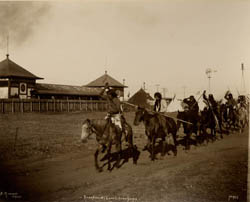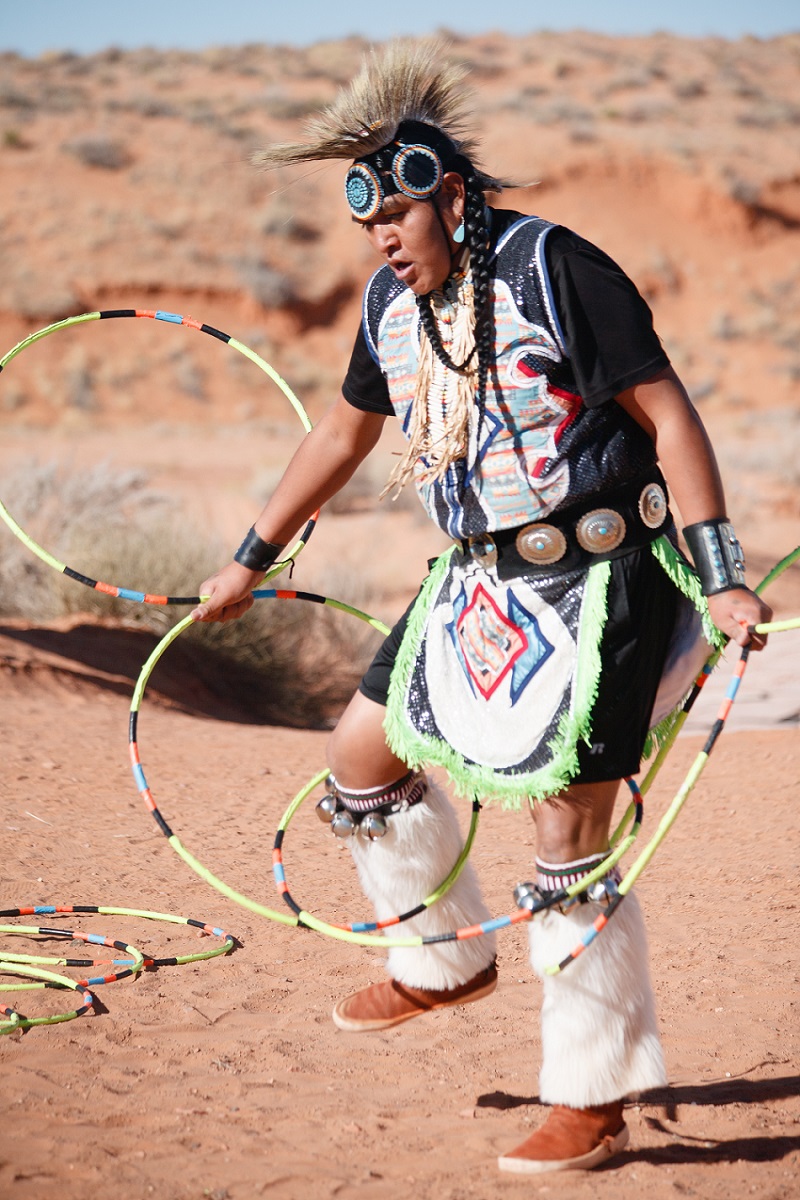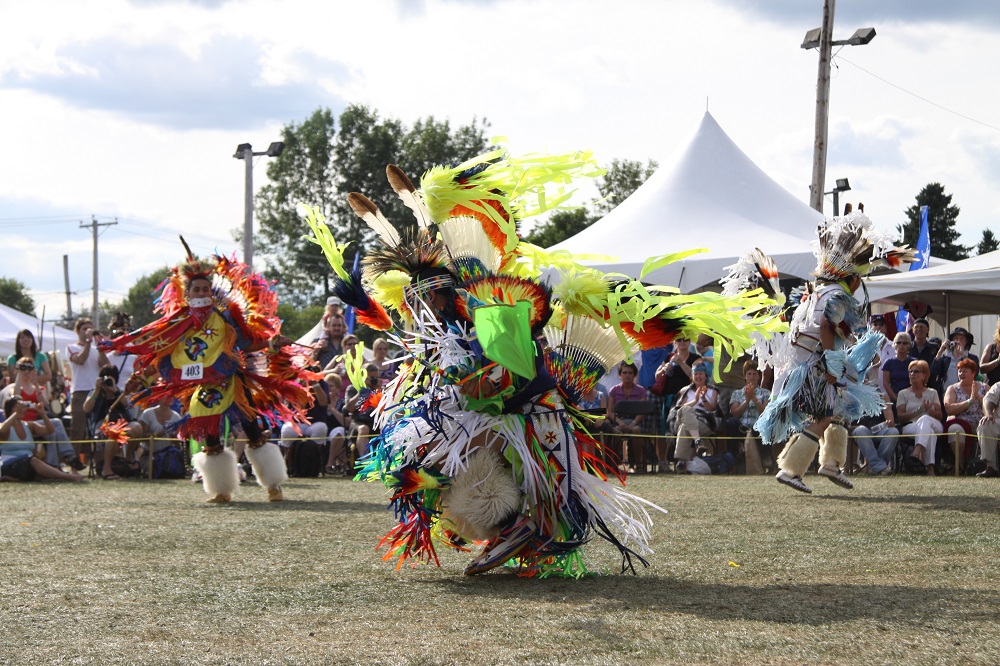
Studying Native North America (Continued)
One of the most difficult parts of learning about American Indian music is the sheer size and diversity of repertoire. Because of this, representative examples from a variety of musical genres and tribal nations have been chosen to highlight this diversity. It is important to understand that in traditional native cultures, there is no overarching concept of "music." Instead, there are a variety of song types, classified by their function in culture and/or their connectedness with other cultural aspects, including dance.
For example, songs may be classified as "flute" songs, "war dance" songs, "social dance" songs, or "curing" songs, but are NOT known as "Music for Flute" or "Music for Social Dancing."
Vocal song types in native North America include ceremonial/ritual songs (religious, curing, etc.), social and war dances, animal songs, work songs, songs to proclaim social status, lullabies, and many other genres. Rarely "composed" in the Western sense, songs in their entirety often come to life through a dream or vision, with the singer serving as a musical conduit and caretaker. Contemporary traditionalists use the term "made" (or occasionally "caught") to describe songs acquired through personal creation, which are then learned and preserved by individuals via oral tradition, or through the medium of cassette tapes or compact discs. With the exception of ethnological transcriptions, Indian music has bypassed the stage of printed notation, moving directly from oral tradition to dissemination by modern recording technology.
Musical and vocal styles are as varied as song types. Most song texts are made up at least in part of vocables: disconnected syllables specific to a culture area that are often remnants of archaic languages. Song texts including narratives in an Indian language are sometimes called "word songs," and often refer to historical events. The origins of dances within Indian communities are similar to the origins of songs: dreams or visions, imitations of animal movements, and the exchange of dance styles and regalia with neighboring tribes, usually done in a formal ceremony of transmission. Some dances are "owned," and as individual or communal property should not to be used without their owner's permission.
Most dance forms have a specific body of songs that accompany them, and these are traded in conjunction with the dance from group to group through a process known as diffusion. As time passes, new footwork, regalia, and songs are layered onto the inceptive dance, and tribal distinctions develop between formerly similar types. Through this mechanism, continuity and change occur side by side, with older forms retained while new ones evolve.
Almost all Native American songs have a steady pulse (sometimes referred to as its "beat"), and most dance songs also have a feeling of meter (duple or triple, with triple meter patterns accenting the 1st and 3rd beats). Native songs, even the most basic ones, will have a formal structure (or song form) of some kind, which fits them into a specific category of songs known to the dancers. Form is a very important attribute of music, because knowing the form allows the dancers to "know what is coming," and use dance footwork and gesture that is appropriate to the specific song they are dancing to.
Often the form is in a series of phrases, similar to phrases in a sentence, with a vocal pattern at the end of each phrase known as a cadence, which functions like the period at the end of a sentence. Finally, the majority of American Indian songs are monophonic, meaning that all singers sing the same melody at the same time, but some traditions value music, which means that the singing is looser, and some singers might get ahead or behind the main melody. A few native song styles, especially on the Northwest Coast areas (Washington State, British Columbia, and Alaska), and in the Southeast (Cherokee/Creek) use harmony, where singers purposefully sing different tones simultaneously to create chords.





In Native American cultures, the roles of music and dance are connected with ceremonial rituals.







